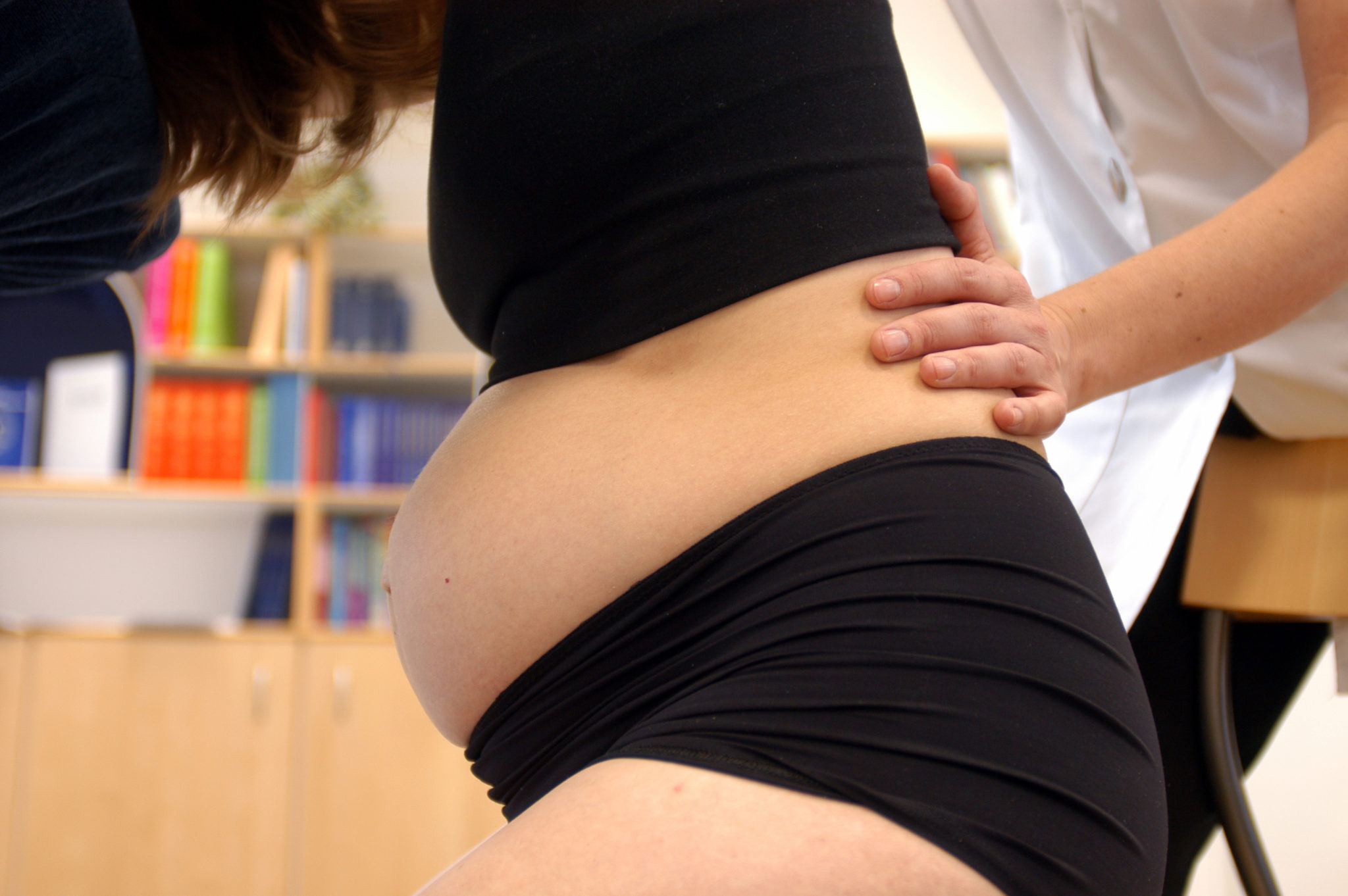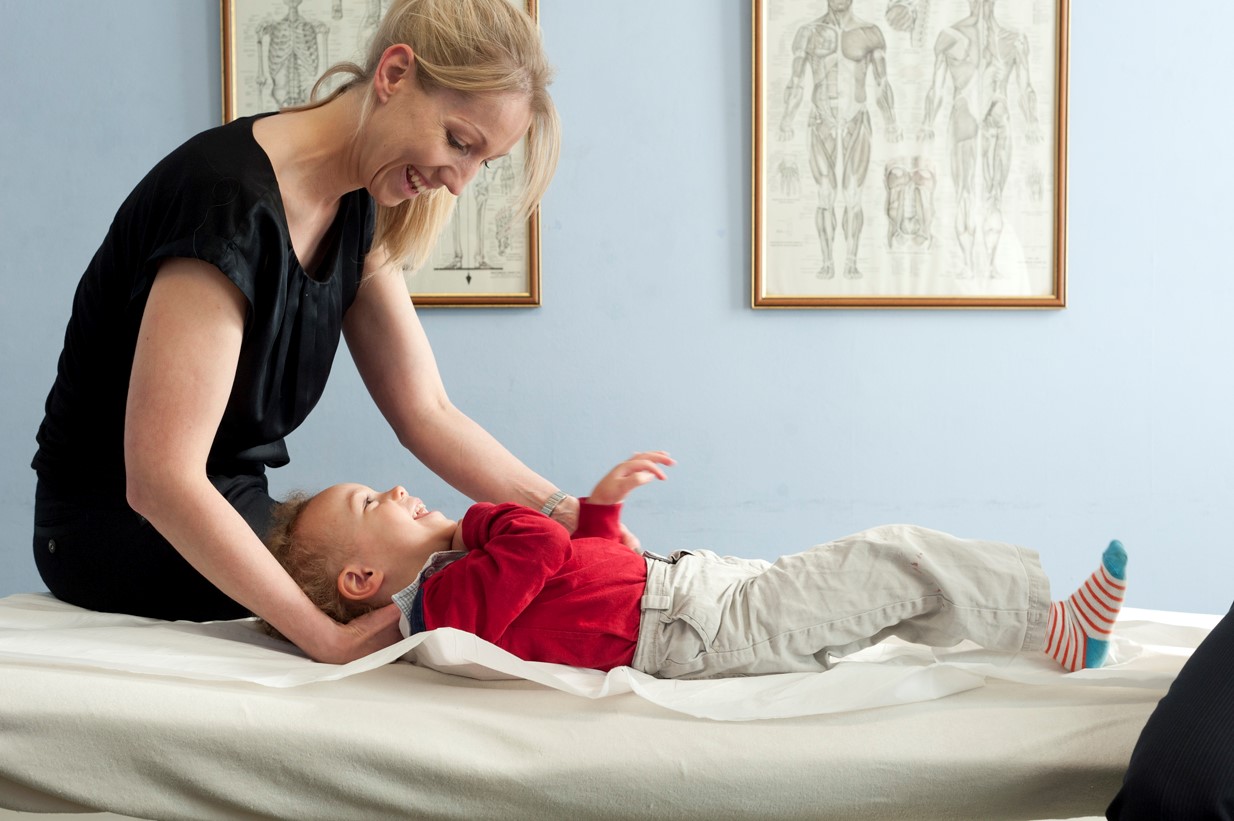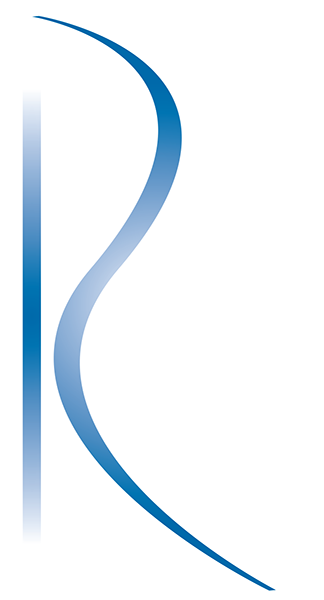Mothers & Babies
Expectant Mothers & Post Pregnancy
Mothers can often experience spinal and pelvic pain during pregnancy as their baby develops.
A developing baby increases in weight throughout pregnancy but also the placenta, uterus and amniotic fluid bathing the baby increase in size as well. This added weight adds mechanical strain to the spine and pelvis. This growing weight also leads to postural changes. The pelvis starts to rotate forward, the curve in the base of the spine (lordosis) increases and effects the rest of the spine. This puts more strain on the muscles, ligaments and tendons that have to cope with these new demands leading to possible aches and pains. There is also additional strain on the joints in the pelvis, the sacroiliac joints either side of the sacrum and the pubic symphysis joint at the front. This can sometimes lead to significant pain in either buttock or groin, often worse on walking.
In the later stages of pregnancy a hormone called relaxin is produced. This loosens up the ligaments with the aim of making the birth canal more pliable. It can unfortunately diminish the supporting role of those ligaments supporting these joints, leaving them more vulnerable to strain.
The growing baby can also start to push up into the diaphragm, stomach and lungs, sometimes leading to symptoms of indigestion or heart burn and discomfort with breathing.
Our osteopaths aim to get you pain free by trying to understand the individual nature of each patients problem, using gentle techniques to improve posture and function and give tailored advice on how to manage and prevent issues.
Sometimes, symptoms can persist after the birth. Our osteopaths can use a combination of treatment, advice and exercises to help during this period. Treatment is very gentle and safe for mum and baby.
Babies & Children – Cranial Osteopathy
Every parent’s priority is to provide the best environment to support their child’s health as they develop and grow. Cranial Osteopathy can offer a very gentle approach, particularly for babies. Children’s requirements differ depending on the stage of their development. As they grow from infants, toddlers, children to teenagers, our osteopaths will consider your child’s individual needs, age and stage of development, and adapt their advice and treatment accordingly.
Giving birth to a child is a wonderful, natural event. The process itself though can be stressful for both mother and baby. Babies’ heads are naturally bigger than the birth canal. To allow a baby to be born, the bone “plates” in a baby’s head are very flexible with some large gaps to allow the skull to be malleable. During birth, the plates get squeezed and they slightly overlap to allow the skull to squeeze through the pelvis. There is also a natural twisting action as this happens. As a baby is being helped out there can also be a degree of strain on their neck, spine and pelvis. Even in a Caesarian section birth there can be a level of strain. Additional pressure on the skull might occur if there is a forceps or Ventouse delivery.
Whilst many babies bounce back from this, some could be left with patterns of strain or imbalance that may have an impact on them either immediately or throughout their development.
Our osteopaths would assess to see if there were any such issues and use very gentle techniques to restore function and balance. The most common technique used with babies is the “cranial” or “cranio-sacral” technique which uses very gentle, subtle movements to effectively address any issues.
Osteopathic practice is safe and effective. Research has shown that people trust their osteopath and are extremely satisfied by their experience of osteopathic care*. This provides parents confidence in the level of care their children can expect to receive.
How can your osteopath help?
Parents visit osteopaths for a range of reasons to support their child’s health. Children, like adults, can be affected by general joint and muscle issues, which is one of the reasons people visit an osteopath. Parents will also take their babies and children to visit an osteopath for a variety of other health reasons that may benefit from osteopathic care.
Our care is based on the individual needs of the patient, it will vary depending on your child’s age and the diagnosis. Our osteopaths generally use a wide range of gentle hands-on techniques that focus on releasing tension, improving mobility and optimising function. This is often used together with exercise and helpful advice. Our osteopaths have been trained in very gentle techniques which are particularly suitable to assess and treat very young children, including new-borns. Please call us to find out more.
* “93.2% of osteopathic patients felt that their experience of osteopathy was very good.”
Patient-Reported Outcome Measures adult data, 2017
“96% of osteopathic patients expressed confidence in osteopathic treatment and advice”
You.Gov Public Perceptions survey, 2015


These photos are used with permission, copyright The General Osteopathic Council and Jan Chlebik.
Thank goodness we found Emilie! Our son has a dairy allergy and had been in pain with gas and Emilie was able to help him with her incredible skill. She also found a few other issues which she corrected such as a tightening in his stomach which was also causing him tummy issues. Thank you Emilie, I highly recommend you to anyone who is looking for a Cranial Osteopath.
You feel like you are in safe hands with Emilie. Before seeing her I was in an awful lot of pain and unable to walk, caused by Pelvic Girdle Pain and the delivery of my baby. I feel she really listens to what your symptoms are and treats them specifically session by session.
The treatment I have received has gotten me back on my feet, able to run after my little one and even start up jogging again. Something I wasn’t sure I’d be able to get back into. I really cannot recommend her treatment enough.
Thank you so much Emilie for my treatments. At a time when I was desperate for some relief from sciatic pain and hip pain during pregnancy, Emilie really helped me. She was also very personable and put me at ease. I felt as though I was in the company of a friend
